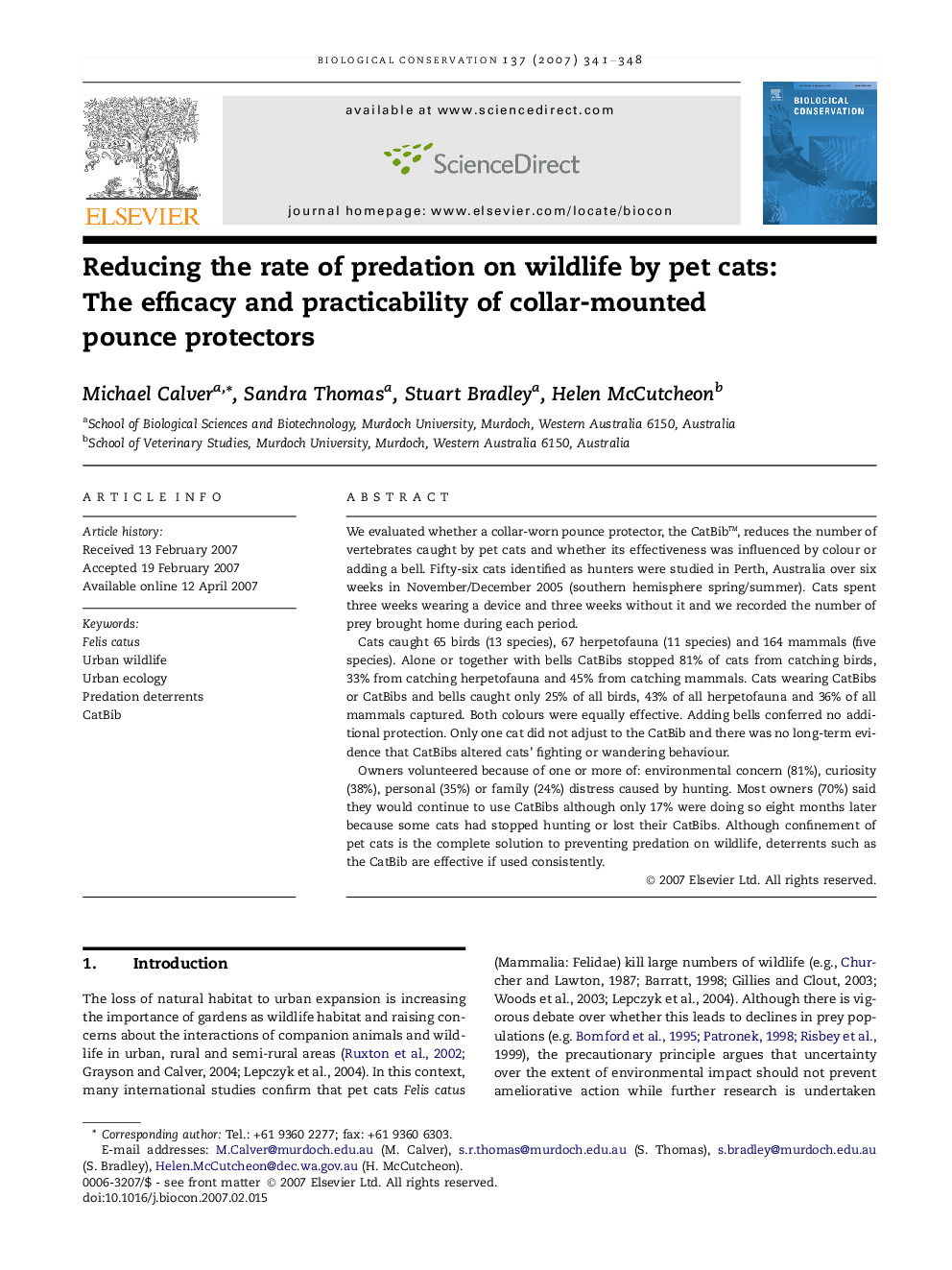| Article ID | Journal | Published Year | Pages | File Type |
|---|---|---|---|---|
| 4387204 | Biological Conservation | 2007 | 8 Pages |
We evaluated whether a collar-worn pounce protector, the CatBib™, reduces the number of vertebrates caught by pet cats and whether its effectiveness was influenced by colour or adding a bell. Fifty-six cats identified as hunters were studied in Perth, Australia over six weeks in November/December 2005 (southern hemisphere spring/summer). Cats spent three weeks wearing a device and three weeks without it and we recorded the number of prey brought home during each period.Cats caught 65 birds (13 species), 67 herpetofauna (11 species) and 164 mammals (five species). Alone or together with bells CatBibs stopped 81% of cats from catching birds, 33% from catching herpetofauna and 45% from catching mammals. Cats wearing CatBibs or CatBibs and bells caught only 25% of all birds, 43% of all herpetofauna and 36% of all mammals captured. Both colours were equally effective. Adding bells conferred no additional protection. Only one cat did not adjust to the CatBib and there was no long-term evidence that CatBibs altered cats’ fighting or wandering behaviour.Owners volunteered because of one or more of: environmental concern (81%), curiosity (38%), personal (35%) or family (24%) distress caused by hunting. Most owners (70%) said they would continue to use CatBibs although only 17% were doing so eight months later because some cats had stopped hunting or lost their CatBibs. Although confinement of pet cats is the complete solution to preventing predation on wildlife, deterrents such as the CatBib are effective if used consistently.
